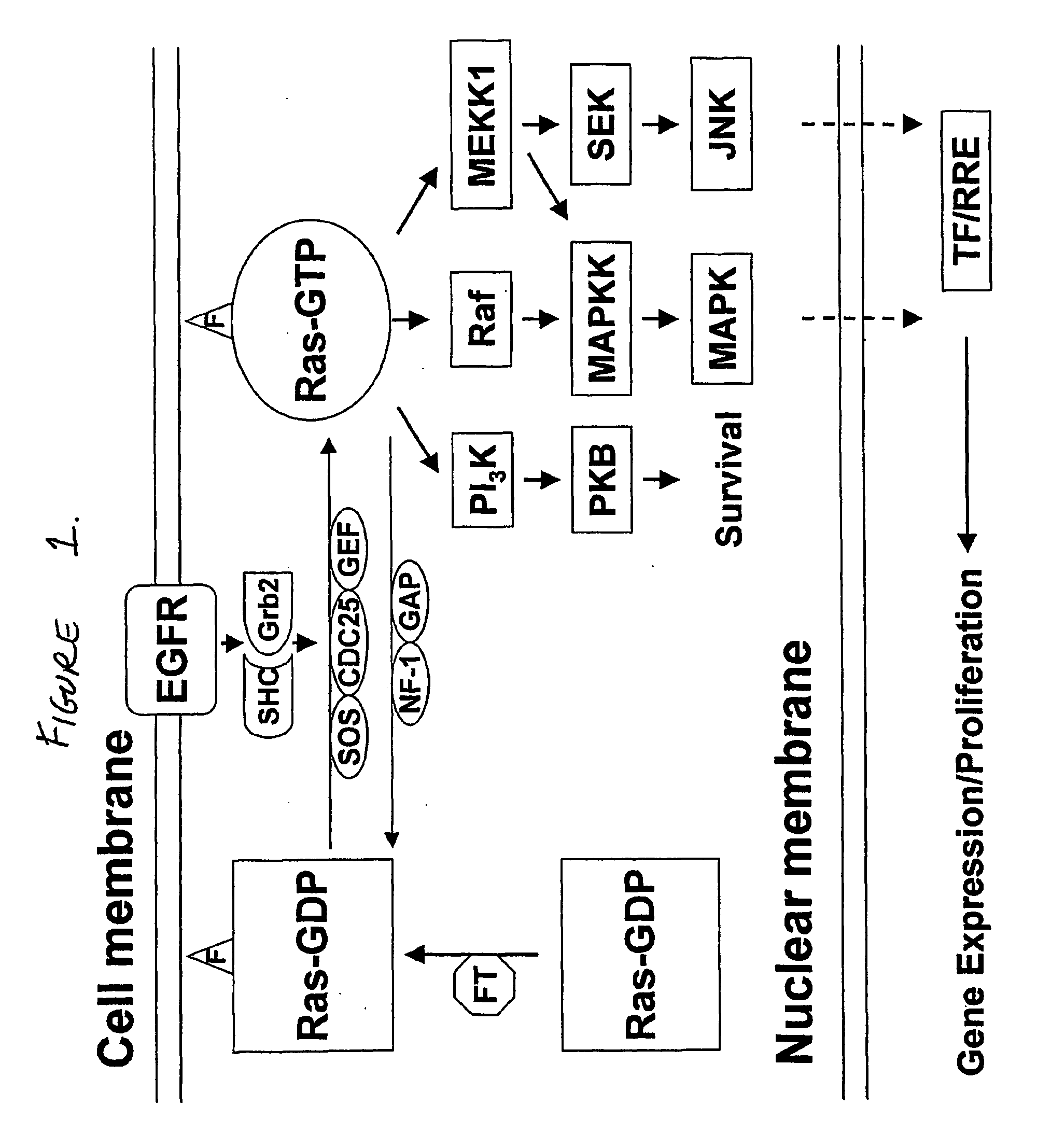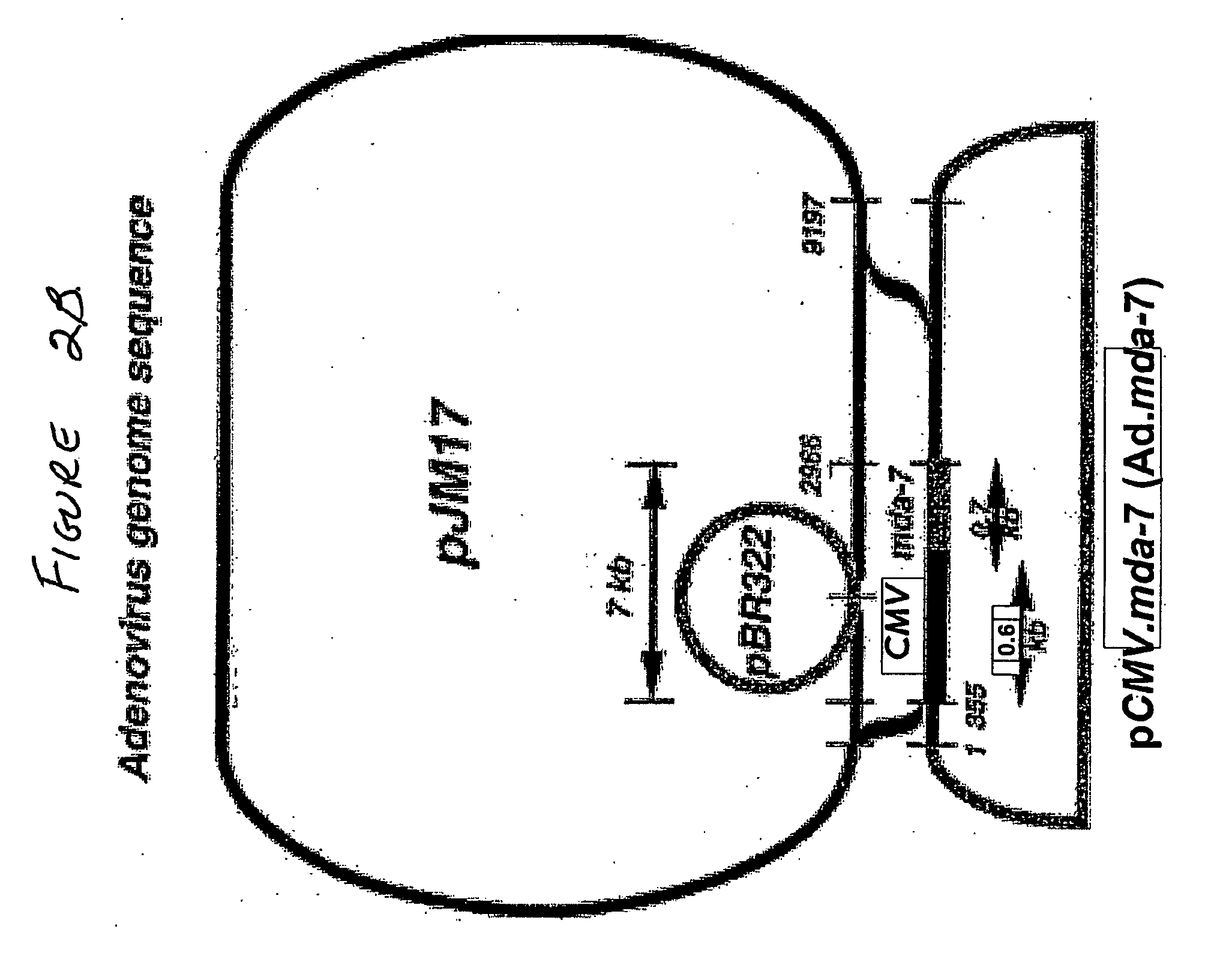Combinatorial methods for inducing cancer cell death
a cell death and induction technology, applied in the direction of viruses, peptides, drug compositions, etc., can solve the problems of insufficient pancreatic cancer elimination, single approach to inhibit k-ras, and ineffective mda-7 anti-pancreatic carcinoma cells
- Summary
- Abstract
- Description
- Claims
- Application Information
AI Technical Summary
Benefits of technology
Problems solved by technology
Method used
Image
Examples
Embodiment Construction
[0043] For clarity of presentation, and not by way of limitation, the detailed description is divided into the following subsections:
[0044] (i) compositions that increase MDA-7 protein;
[0045] (ii) compositions that decrease RAS activity;
[0046] (iii) assays to identify suitable target cells;
[0047] (iv) assays to identify anti-cancer small molecules; and
[0048] (v) methods of use.
5.1. Compositions that Increase MDA-7 Protein
[0049] The first component necessary for practicing the methods of the invention is a means for increasing the amount of MDA-7 protein in a cancer cell and / or within a population of cancer cells. The convention of distinguishing between the gene and protein by using lower case versus capital letters is followed herein, so that mda-7 refers to nucleic acid molecules and MDA-7 refers to proteins (the same designations are used herein for ras genes and their encoded proteins). The term "gene" as used herein refers to any nucleic acid from which a functional protein can...
PUM
| Property | Measurement | Unit |
|---|---|---|
| molecular weights | aaaaa | aaaaa |
| density | aaaaa | aaaaa |
| concentrations | aaaaa | aaaaa |
Abstract
Description
Claims
Application Information
 Login to View More
Login to View More - R&D
- Intellectual Property
- Life Sciences
- Materials
- Tech Scout
- Unparalleled Data Quality
- Higher Quality Content
- 60% Fewer Hallucinations
Browse by: Latest US Patents, China's latest patents, Technical Efficacy Thesaurus, Application Domain, Technology Topic, Popular Technical Reports.
© 2025 PatSnap. All rights reserved.Legal|Privacy policy|Modern Slavery Act Transparency Statement|Sitemap|About US| Contact US: help@patsnap.com



